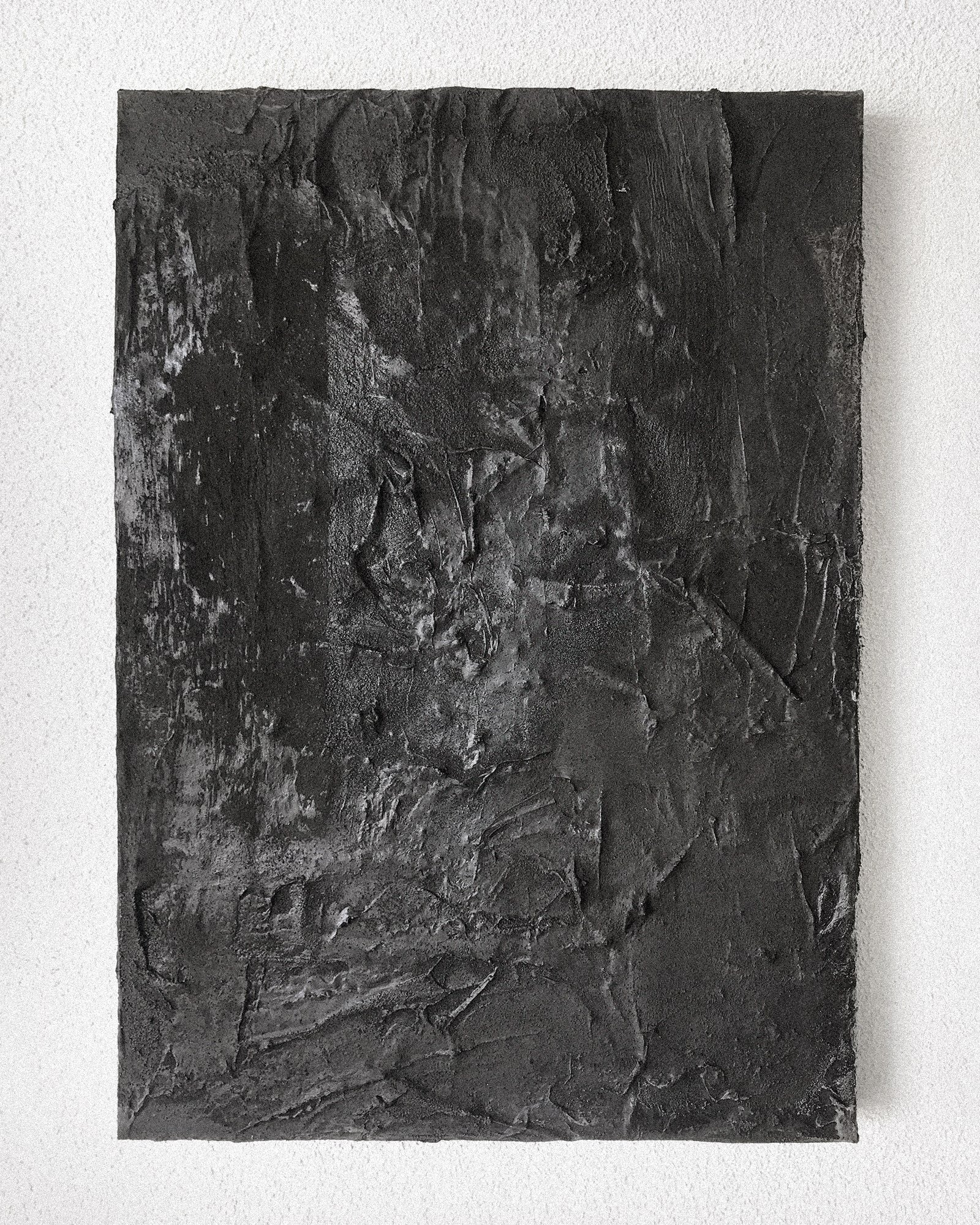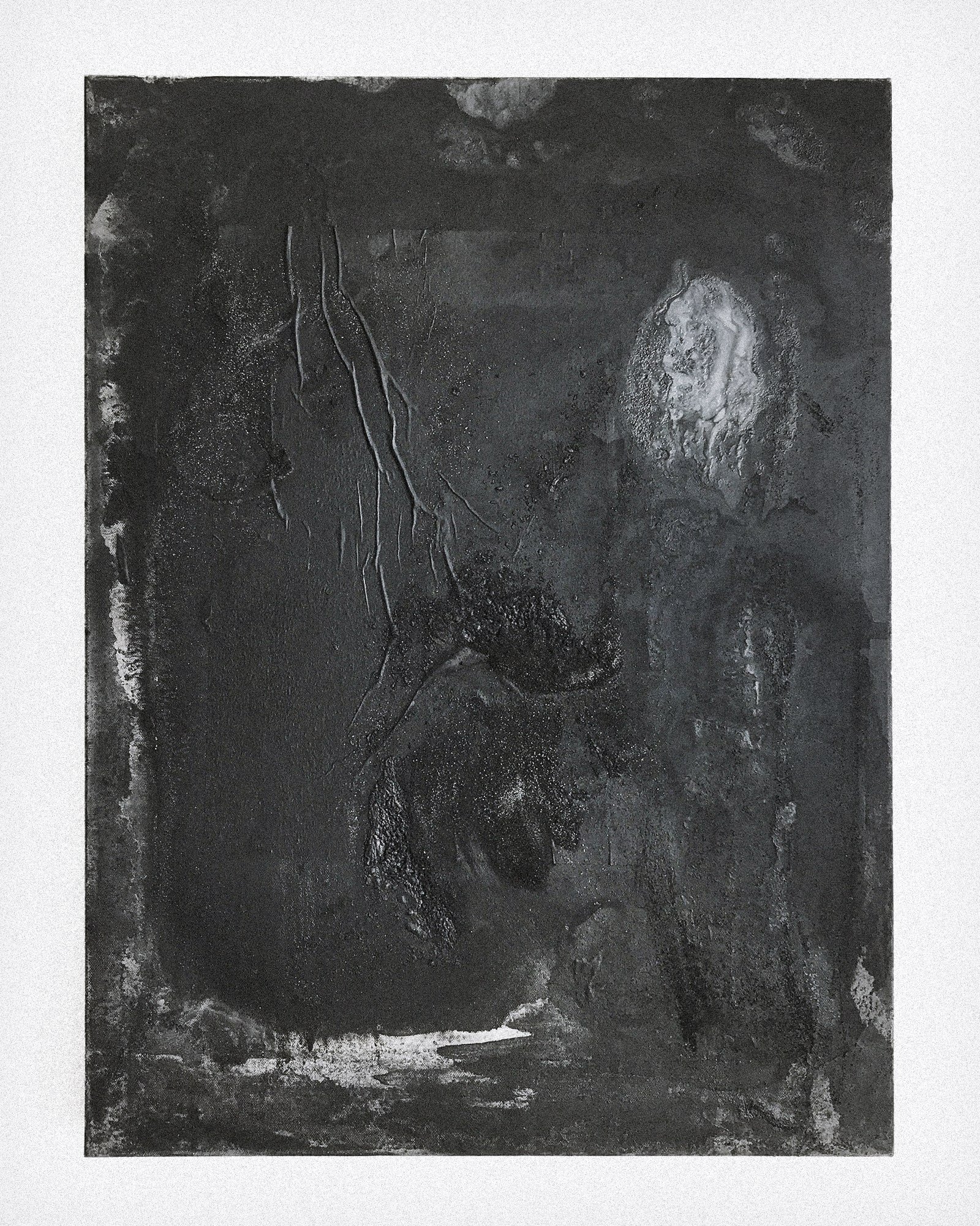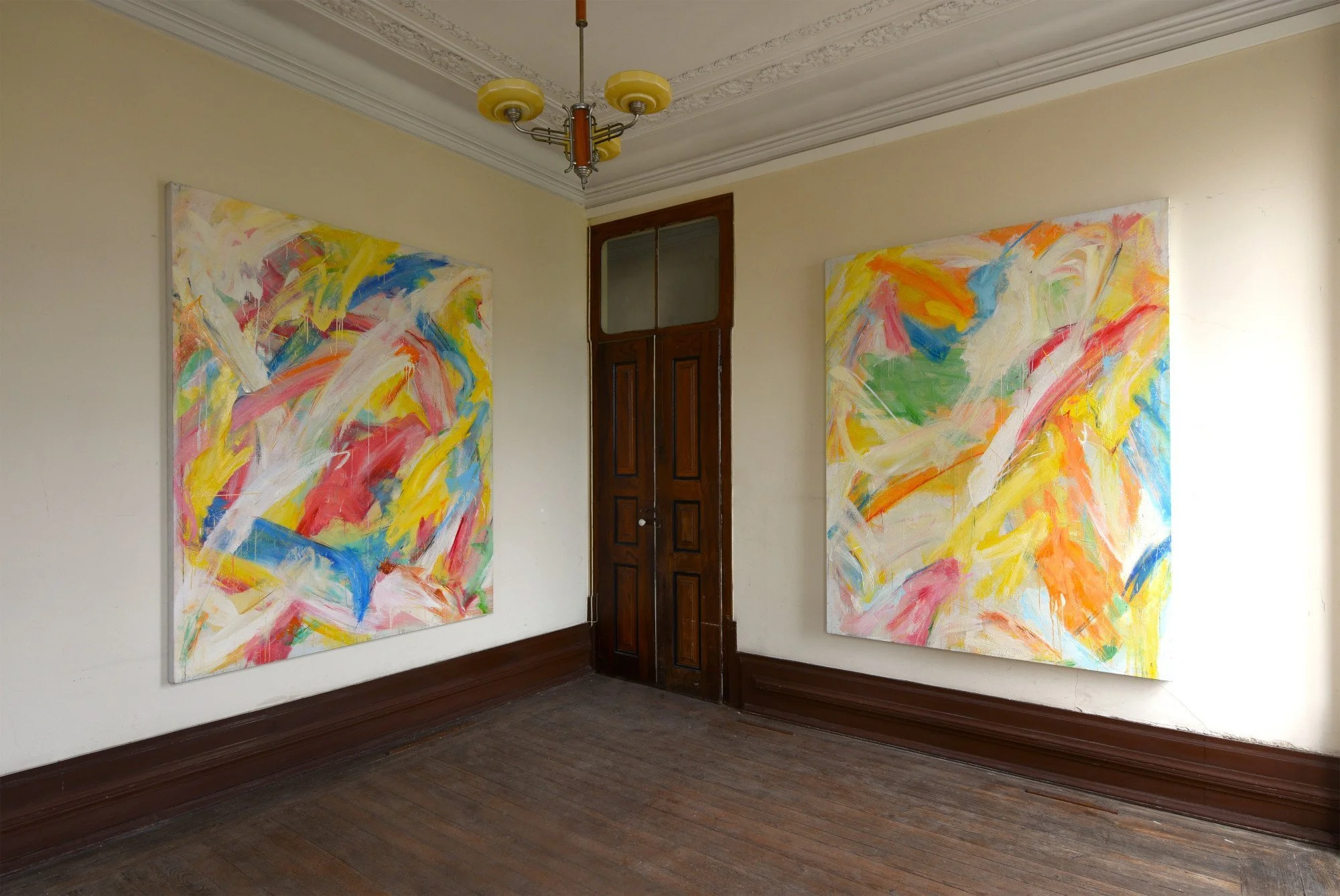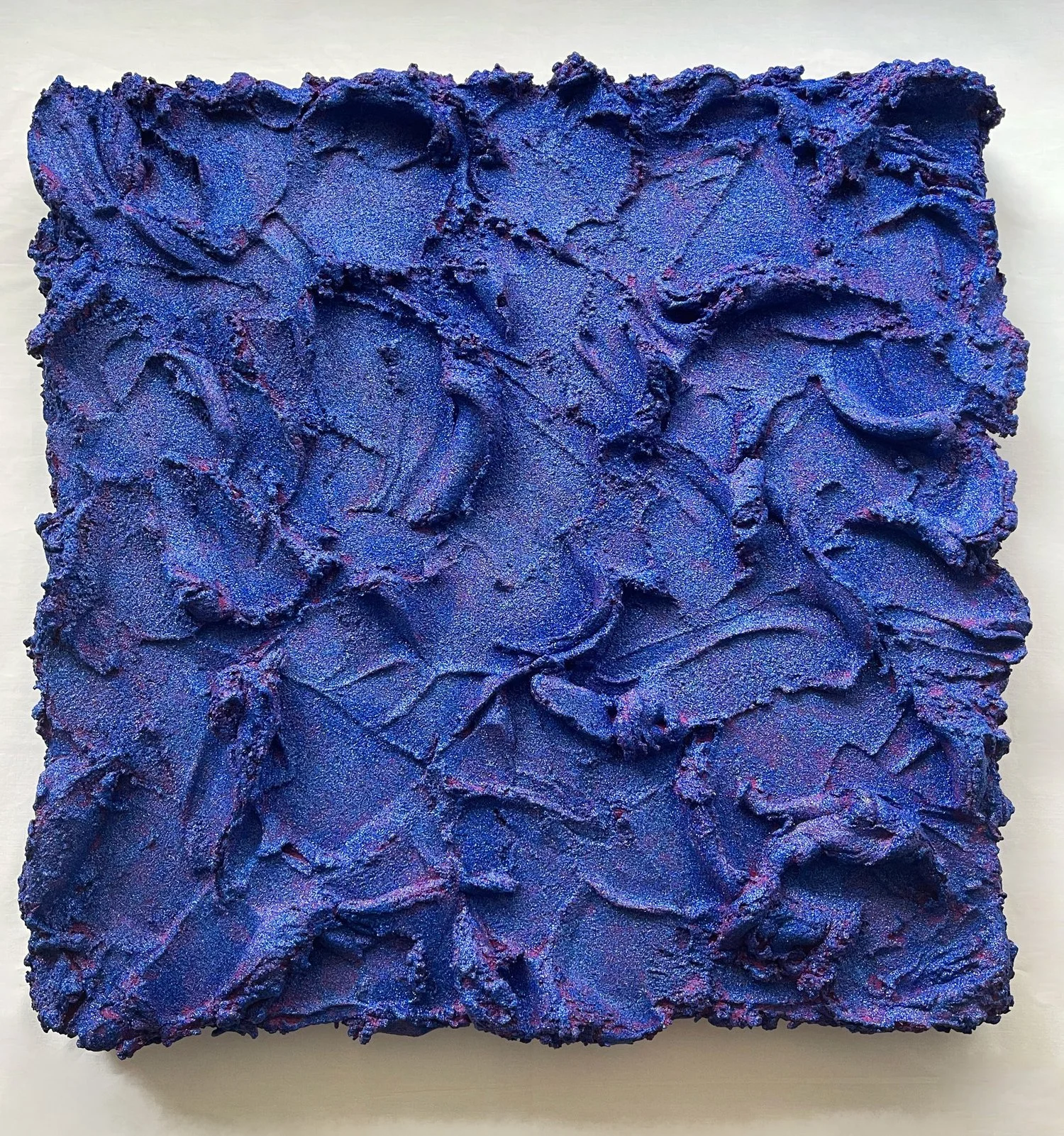10 Questions with Maja Malmcrona
Maja Malmcrona is a contemporary artist born in 1993 in Gothenburg, Sweden. After finishing a Bachelor of Fine Arts degree in Architecture at Umeå University, her interest in abstract ideas brought her to the United Kingdom, where she earned a Master of Science degree in Philosophy at the University of Glasgow. During these studies, she explored art as the meaning-giving substance of our contemporary culture, akin to the religious experience. This cemented her artistic practice, which she has relentlessly pursued since. Maja’s work is held by collectors across the world, and she has been featured in numerous publications — including Vogue, GQ, House & Garden, and VAST Magazine. She currently lives and works in Zurich, Switzerland.
Maja Malmcrona Portrait
ARTIST STATEMENT
Maja’s work is highly visceral, characterised by an open-ended process of experimentation and mistake. The pieces are continuous works in progress consisting of multiple layers of various media that create a living, three-dimensional, and almost sculptural surface. The process of creation is tainted by deep uncertainty. It is a celebration of the obscure, the unfamiliar, and the introspective, rejecting premeditated symbols in favour of the much richer subjective inner world of the spectators themselves. By integrating all aspects of this journey into the final work itself, the pieces become like monuments to the range of emotions inherent in the process of creation — the outcome of which is impossible to foresee beforehand. In the end, the works attempt to provide disruption of one’s particular experience in a certain place and time, acting as portals into a novel way of looking at not just the world around you, but yourself.
“Have you ever been on a boat during a dark night? If you look down on the water, there is this all-consuming blackness slowly resonating to the motion of the waves. That’s what your paintings remind me of. I guess not everyone likes to gaze into the void or the abyss, as Nietzsche once wrote, because it makes them uncomfortable or even scares them. But art is supposed to trigger emotions in you. If it doesn’t, it’s dispensable.”
INTERVIEW
First of all, introduce yourself to our readers. What is your artistic background and how did you become an artist?
I am an artist from Sweden currently based in Zürich, Switzerland. My formal background is in architecture and philosophy, but I have been involved in other creative fields as well, especially photography and creative writing. I turned to art when those fields no longer seemed to suffice.
What is your personal aim as an artist?
I can't decide whether that's a simple or a very difficult question to answer. In short, I'd like to use art as a vehicle to see the world from a different perspective — allowing the work of art to reflect upon and broaden both my own and others' experience of the world.
But perhaps that's too general of an answer. On a more personal level, I want to generate work that creates consolation against the absurdity and tragedy of our lives. Or, to put it in another way, I'd like to create a space in which I feel at home.
No. 93, Mixed media, charcoal, tea, ink, spray paint, quartz sand, acrylic, newsprint, cardboard, and glue on canvas, 50x70x4,5 cm, 2021 © Maja Malmcrona
Your paintings are thick and layered. Can you tell us how you work on them? And what techniques and materials do you use?
The multilayered works you refer to are largely arenas for experimentation. In these, every step of the process is conserved, and every mistake is visible in the final art piece. I do not erase failures (though I do sometimes set them aflame), and rather than trying to hide any mistakes, I incorporate them into the final work of art — hence the thickness.
I work viscerally and base the work on sensation, which is largely conveyed through materiality. I use sand, tar, glue, paper, cardboard, paint, detergent, ink, and more, and I generally prefer the rawness and imperfection of the more industrial materials. Technique-wise, I try to remain equally open-minded: I use both sculpting and pouring in most of my work, and I generally prefer knives and spatulas over brushes since I often find the latter too neat and precise.
No. 68, Mixed media, ink, acrylic, paper, plaster, tape, and glue on canvas, 60x60x4,5 cm, 2020 © Maja Malmcrona
No. 87, Mixed media, tea, ink, spray paint, acrylic, plaster, and glue on canvas, 70x70x4,5 cm, 2021 © Maja Malmcrona
What about messages you try to convey? What would you like the viewers to get from your works?
On an experiential level, my hope is that my work evokes a similar kind of experience for the spectator upon viewing it as it did to me upon creating it. I try to, in large part, convey a sensation of a sort of dislocation in space and time through the materiality, movement, and balance of the pieces. In turn, I hope that this may act as a sort of portal into yourself: granting access, through disruption, to a novel way of thinking about and experiencing yourself in your current context.
Conceptually, I am perhaps most interested in what art is at its most fundamental level, and what purpose it may serve for us — symbolically as well as phenomenologically. I hope the work may also act as a sort of catalyst for evoking similar questions in the audience.
Let's talk about your creative process. Do you meticulously plan every work, or do you let shapes come alive by random interventions?
Though my work is rooted in specific sensations, I try to plan as little as I can — preferring to work from a space of open-endedness rather than one in which I am burdened by the inherent restrictions of a formalized plan or concept. It is only after these first stages that I allow myself to formalize the intention of the work properly, since I otherwise run the risk of losing its playfulness.
Of course, this can be quite difficult since it means I am always, to some extent, fumbling in the dark. But, on the other hand, it is what allows for a truer and more deep representation of the idea — or rather, the sensation.
No. 105, Mixed media, ink, tea, acrylic, glue, quartz sand, and detergent on canvas, 60x80x4,5 cm, 2021 © Maja Malmcrona
Another striking element is the color, as you mostly use dark colors. Is there a specific reason behind this choice? And how do you choose the colors to use in your paintings?
The main reason for my darker palette is that I am much more interested in light than in color and generally consider the latter a secondary element of painting (an opinion I am sure many would disagree with). Just like shadows are only perceivable in the light, darkness reveals light — and I find this soothing not only on an experiential level but also conceptually.
That being said, this mostly black palette of mine is not really a conscious decision, and I do spend a fair bit of time experimenting with colour (though these layers rarely make it to the upper levels of the canvas). Perhaps in the future, this is something I will develop further.
Where do you find inspiration for your work?
In short, everywhere. I am inspired by being in the world and the inevitable friction that comes along with that: be it in cities, nature, architecture, art, literature, film, and perhaps most importantly, people. I am very interested in human interaction and the ethics and conventions behind the way we engage with one another. These collisions, sensations, and emotions are what feeds me and my work alike.
No. 100, Mixed media, tea, paper, glue, acrylic, spray paint, and quartz sand on canvas, 50x70x4,5 cm, 2021 © Maja Malmcrona
No. 97, Mixed media, tea, charcoal, ink, spray paint, newsprint, quartz sand, acrylic, plaster, paper, and glue on canvas, 30x40x4,5 cm, 2021 © Maja Malmcrona
What do you think of the surge of digital exhibitions? Do you see them more as an opportunity or more as a threat?
Perhaps a bit of both, with emphasis on the former. On the one hand, it's a great blessing to me that I am able to share my work with an audience that spans all across the globe just by virtue of the internet. But, on the other hand, the experience of my work — alongside the work of most other artists — is completely different in person than it is on a screen.
Perhaps this is self-evident, but in the increasingly digital world that we are now finding ourselves in, it seems to me that many of us are forgetting just how vastly different these experiences can be. Encountering the work in person animates it — it allows it to breathe and to move. Perhaps our technologies will develop to the extent that this will change (and the virtual experience will be just as good as the physical one), but as of now, in my view, we are nowhere near.
I am rather influenced by my architectural background in this regard. It is absolutely impossible to experience an architectural space's full depth and sensation on a two-dimensional screen — too much sensory input is simply missing. The same is, in my view, true for much of art. At least the art that interests me the most.
What are you working on now, and what are your plans for the future? Anything exciting you can tell us about?
My work is pointing in a few different directions at the moment. The creation of new work is itself one factor keeping me busy right now. The other is understanding and elaborating upon these different directions (Where are they going? What are they attempting to do? Where do they collide, and where do they diverge?). I have had a quite busy summer, so I am looking forward to diving into my studio this winter, emerging with a series of new work in the spring. For the moment, that's all I am able to share.
Finally, share something you would like the world to know about you?
I am always painfully contesting not just with my own work but with the meaning and purpose of art in general. However vulnerable this may make you, I think it's important to remind oneself and everyone else about this fact of one's uncertainty, and in those moments, root oneself in the beginnings of not just your own art, but art in general. Which, to me, is all about community. And if art does manage to (even on the most minuscule of levels) serve that purpose alone — that is, connecting us to one another in however abstract and obscure away — then perhaps that's good enough.

























